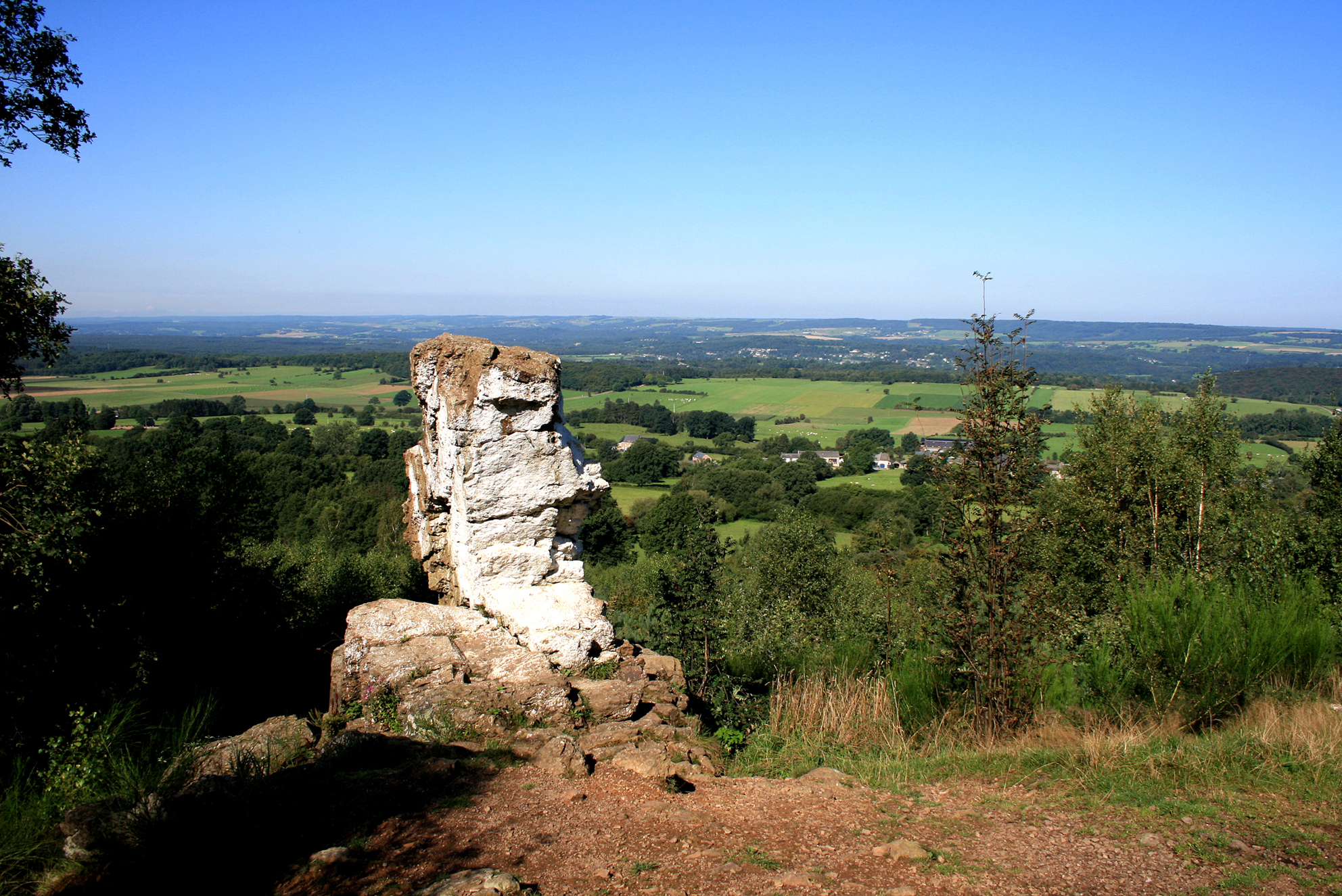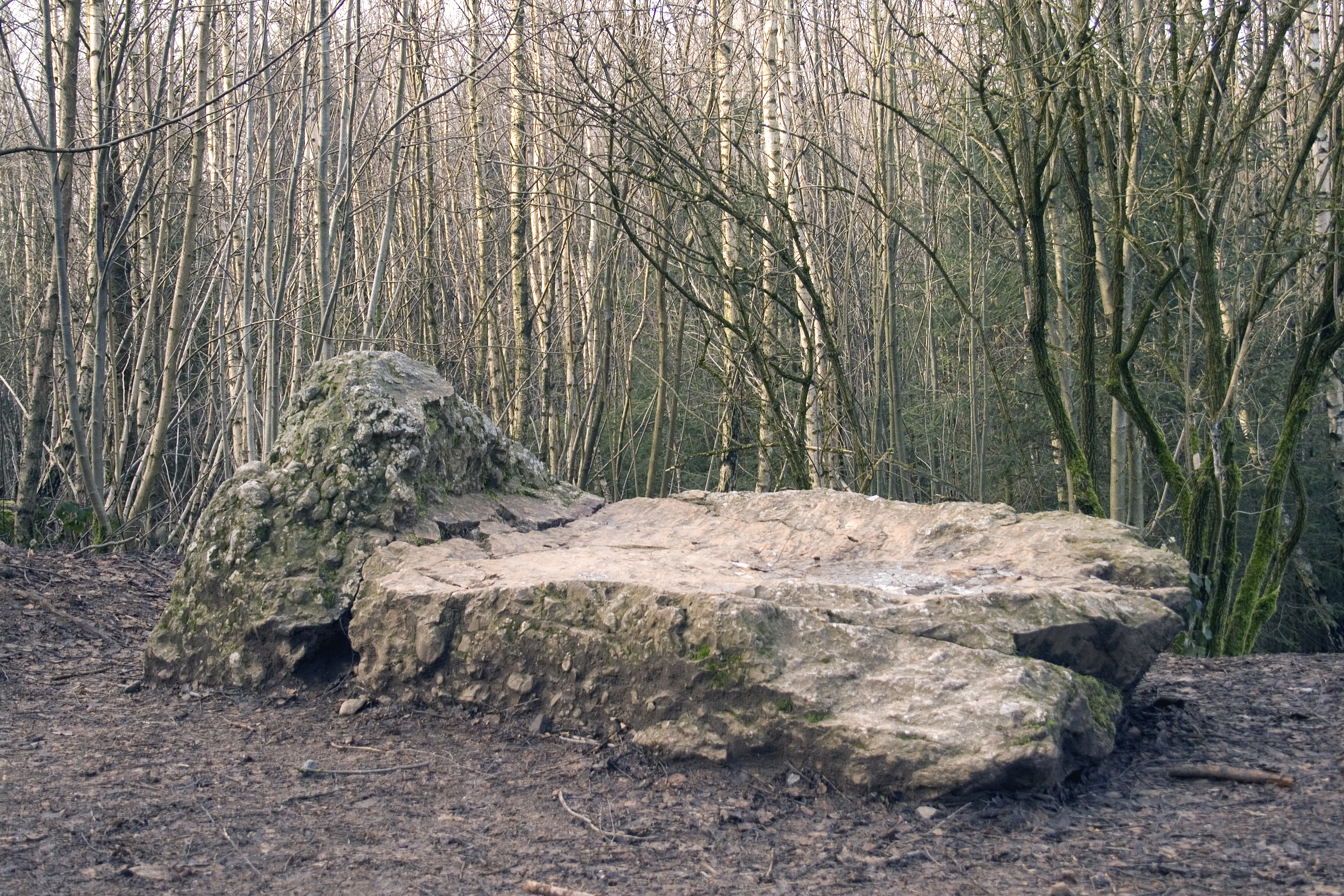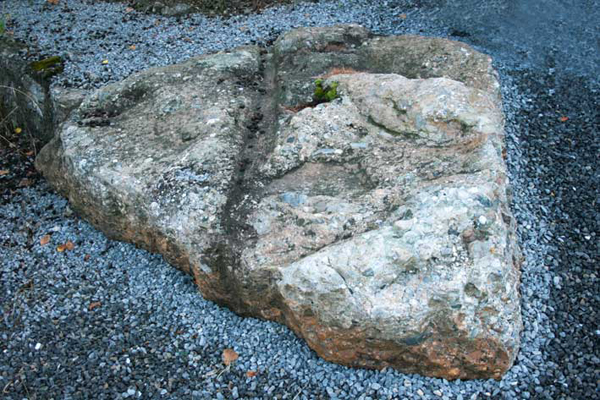Legend stones
The influence of the megalithic monuments on the local life in Wéris can be witnessed in the local folklore, legends and traditions that still live on to the present day. Since ancient times people have sought meanings for the existence of these stones are giants, dwarves, fairies, witches or even the devil himself a part of these mysteries ?
Several legends of Wéris concern three spectacular large rock slabs occurring naturally : - the Pierre Haina (Haina Stone), the Lit du Diable (Devil’s Bed) and the Pas-Bayard (a hoof-print of the magical horse Bayard).

The Pierre Haina is not a menhir but a natural occurrence. It is about 3 metres high and inclined to +/- 45°. It may be that the term “Haina” stems from an old Celtic word meaning stone of our ancestors.
The Pierre Haina dominates the megalithic site of Wéris. It may well be that at the end of the stone-age some 5000 years ago, the first farmers in this region, the “dolmen builders”, stood here to have an overview of the surrounding area. Perhaps it is from this spot that the placements of the megaliths were calculated.
According to one legend, the Pierre Haina is a stopper that closes the entrance to an underground passage, a passage that led deep into the centre of the earth, into the devil’s domain - hell itself!
When hell became too much for the devil or when he needed to seek out more souls, he would crawl out through the tunnel, push aside the big stone – Pierre Haina – and wander at large in the countryside hereabouts.
No-one ever witnessed the devil wandering around because, just before dawn as the cocks crowed, he returned into the passage, replacing the rock behind him. Even so, the villagers noticed that he had been around: - chickens were found dead, quarrels erupted and diseases broke out.
Eventually it became too much for the Wérisiens as the local inhabitants were called, and they decided it had to stop. They gathered in the hostellerie and aided by some schnapps, tried to find a solution; many options were suggested but always turned out to be impracticable. A daughter of the village, dressed in white, entered bringing the fresh eggs of the day to give the villager sustenance in their debate. Suddenly, someone cried out: - “That’s it! That’s what we have to do! WHITE, white, white!! White represents the pure and the good. If we paint the boulder white the devil won’t dare touch it anymore, and he will be unable to escape from hell.”
From that day on, at each autumnal equinox, the Wérisiens paint the Pierre Haina white !
Another tale concerns a “boussu cure” (a hunchback pastor). One morning the pastor, from the hamlet of Fanzel had to go urgently to Morville. It was very cold, with a piercing wind and was raining cats and dogs so that he tried to take a short cut through the woods. This necessitated climbing up a steep slope, but, with the rain and wind lashing about him and the intense cold, he could not continue. Such was his anger that he, even a pastor, uttered some profanities. God, who hears everything, could not forgive the pastor and punished him immediately by turning him to stone! He remains there forever to this day.

The Lit du Diable (Devil’s Bed) is a rock slab 2.4 metres wide by 1.4 metres high and 60 cms thick lying at the bottom of the Pierre Haina hill. You can see it is in the shape of a bed with a headrest. It would be here that the devil took a nap before going back down to Hell. When he was sufficiently recovered on this bed he went down into the underground passage putting the Pierre Haina boulder back in its place.
Enough material for another legend. A miller who lived alongside the river Aisne was desperate. The farmers had had a good harvest, their bags of grain piled up waiting to be ground and the bakers were waiting for the flour. But, there was not enough water in the river to turn his water-wheel. He was at his wit’s end. Satan, always looking for new souls, heard the desperate cries of the miller and approached him to offer his help. He promised to build a dyke in one night which would channel all the rivers water to the miller’s water-wheel. The devil struck a bargain with the miller that in exchange for the dyke being finished next morning, diverting the river’s water to the water-wheel, the devil would get the soul of the miller in return. Desperate to start milling all the farmers’ grain the miller agreed.
The miller’s wife however didn’t want to lose her husband so she came up with a plan.
The next morning the dyke was indeed finished and the water-wheel was turning at full tilt. At the crowing of the cock the devil was waiting for the soul of the miller, but, when he called the miller it was the miller’s dog that came and there was no trace of the miller anywhere. Realising he had been cheated the devil destroyed his night’s work in a few seconds and ran off into the forest. Angry and exhausted he reached a flat stone with a headrest. Here he rested to restore his strength after the exertions of the previous night. Since then this stone has been called the Devil’s Bed.
The remnants of the devilish dyke can still be seen in the river at Roche-à-Frène.

In Pas-Bayard, a hamlet of the village of Oppagne there is a rock in which is a long deep groove. Legend has it that the horse called Bayard, with the four sons of Aymon on his back pushed off from this rock in a mighty jump towards Durbuy – a little jump of about 10 Kms. No wonder he left a deep hoof-print.






